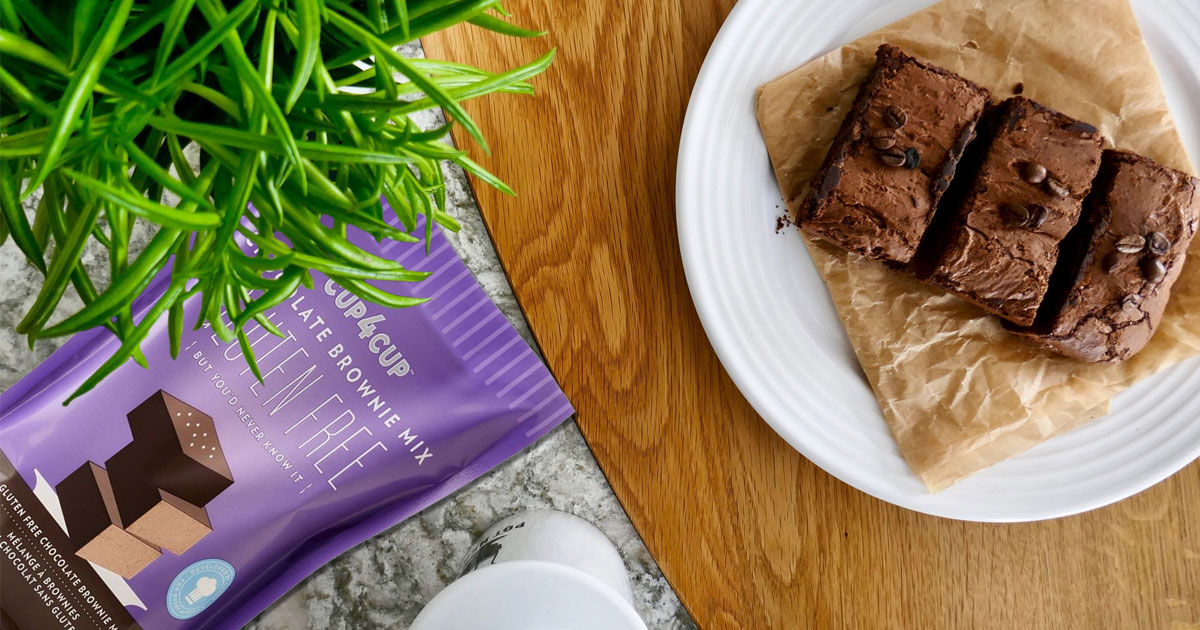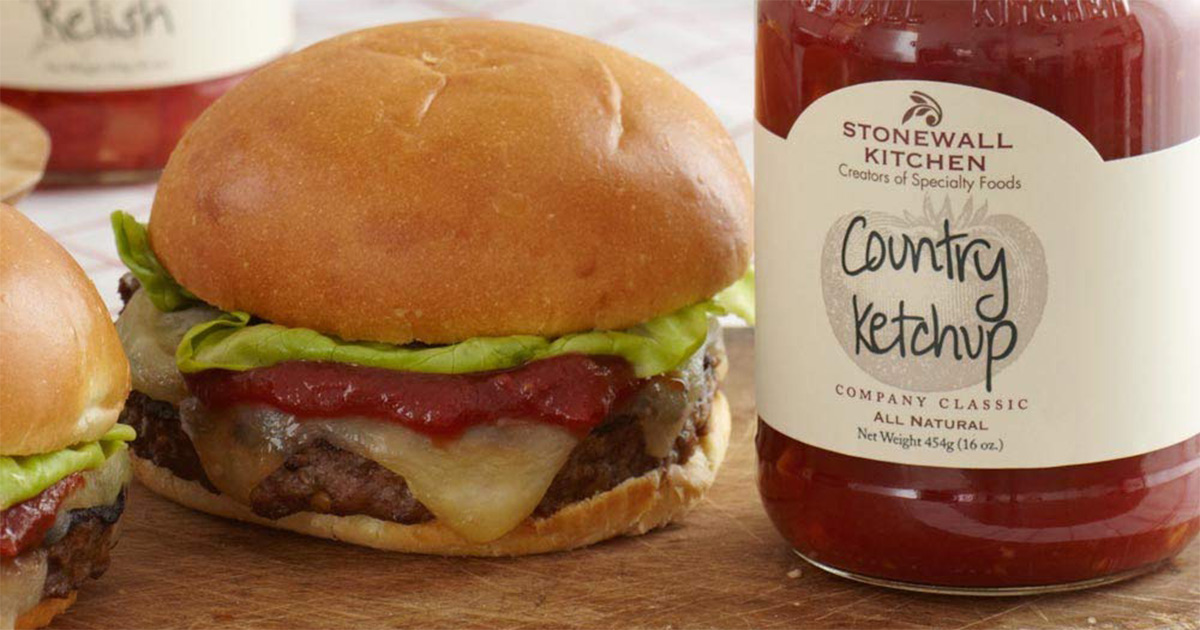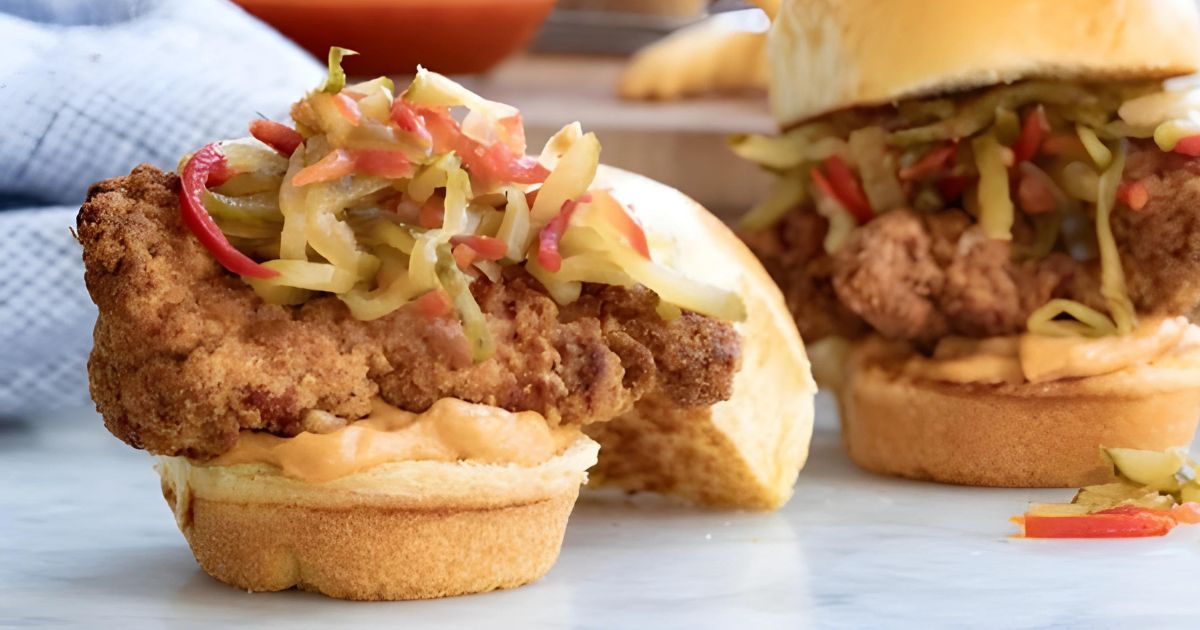When it comes to America and desserts, most people probably first think of traditional pies or the very popular cheesecake also enjoyed here. However, there's another classic in American baking culture that often doesn't come to mind when thinking of desserts: American brownies
What are Brownies?
For those who haven't had the pleasure of enjoying a wonderfully sweet brownie in their life yet, they rightfully wonder: What are brownies? Here's a brief introduction.
A chocolate-rich batter, whether made by hand or using one of the popular brownie baking mixes, is baked in a flat cake pan or a specialized brownie pan until a defined crust forms. The finished cake is then cut into small, rectangular or square portions - the typical serving style of brownies.
The American brownie is traditionally eaten with hands, optionally served with a variety of primarily sweet accompaniments such as milk, ice cream, or powdered sugar.
The Brownie Recipe – Who Invented It?
Even though the brownie can only be traced back to the early 20th century and is thus a very young addition to the American baking repertoire, like so often, it's surrounded by numerous myths and legends.
The most famous is the story of Bertha Palmer, the wife of the owner of the Palmer House Hotel in Chicago. According to legend, Palmer commissioned one of the hotel chefs to create a new dessert item. She took inspiration from the 1893 World's Columbian Exposition in Chicago. The dessert was meant to be part of a lunchbox that the hotel wanted to offer its fair visitors. This idea allegedly gave rise to the recipe for the Palmer House brownie – a variation with walnuts and apricot glaze, which is still served at the hotel today and, if one is to believe the legend, represents the original form of the brownie.
Other myths trace the origin of the brownie to Bangor, Maine. The local variant contains more egg and chocolate than most others, making the brownies moister and softer. Local recipes for this variant date back to 1904.
According to the local legend, a housewife in the area simply forgot the baking powder when baking a regular chocolate cake and served the flat result.
The term "brownie" was initially widely used for a variety of small cakes that had little resemblance to today's classic chocolate brownies, and initially, they were even individually baked in separate molds. The brownie took its current form for the first time in a Boston recipe from 1906, which was published multiple times in cookbooks and newspapers in the following years, sparking the sweet dessert's triumph throughout the nation.
Are Brownies Cakes?
As is often the case, it's all a matter of definition.
According to Oxford Languages, a cake is a "[larger, baked] confectionery item made from flour, fat, sugar, eggs, and other ingredients".
But what exactly makes up a brownie? Of course, there are countless variations, but the classic chocolate brownie, as known from film and television, fundamentally consists of the following ingredients:
- Flour
- Butter
- Sugar
- Eggs
- Chocolate
- Salt
- Cocoa
- Baking powder
When it comes to ingredients and preparation, according to this definition, the brownie would undoubtedly be considered a cake.
However, other definitions classify the brownie not as a cake but as a type of cookie, specifically the so-called cookie bars. According to this definition, brownies are not cakes, as they are traditionally eaten with bare hands rather than with a fork, similar to cookies.
From a modern perspective, this definition is quite vague, as brownies are often enjoyed with ice cream, eggnog, or similar sauces, and the warm version is also commonly eaten with forks.
American Brownies – cakey, fudgy, or chewy?
Whether cake or not, it's undisputed that there's a point where the preferences of brownie lovers sharply diverge.
Is the best American brownie fudgy or cakey?
But for the brownie novice, where exactly does the difference lie?
Cakey brownies, as the name suggests, are in texture and volume much closer to cakes commonly found elsewhere. They are usually lighter and airier, and even though they retain the typical moistness of brownies, they are less sticky than other variations. The main difference lies in the preparation. For airy, cake-like brownies, air is beaten into the batter. This is often done during the process of beating eggs and butter. This makes the batter stiffer and the result after baking light and airy. In general, cakey brownies have less sugar, butter, and flour than their fudgy cousins.
Fudgy brownies are the variation that most people around here would most readily recognize as American brownies. These brownies are moist, soft, and often slightly underbaked on the inside, giving them an almost sticky consistency. To avoid the lightness typically associated with cakes, eggs and butter are mixed with the other ingredients without being beaten. This keeps the batter dense and moist.
Chewy brownies are often variations of fudgy brownies. To give the brownies a bit more "chewiness," you simply increase the amount of flour added. But be careful: this can cause the brownies to dry out quickly. So, pay particular attention to the baking time. If desired, this risk can be mitigated by adding an extra egg. The extra chewiness remains.
Making Brownies – Including Vegan Options
Want to make brownies yourself? We'll show you what you need to consider. To give the brownies the perfect consistency, there are a whole range of factors and variables that every brownie chef should keep in mind.
Let's start with the batter.
Anyone who has tried baking themselves knows the challenges of getting the batter mixed just right. Sometimes it's too sticky, other times it's too crumbly, or after all the effort and work, it doesn't rise properly. The pitfalls and hurdles of baking are numerous if you want to perfect your craft, and the brownie is no exception.
If you enjoy debating how moist and soft a brownie can be, special attention should be given to the butter. For a fluffy cakey brownie, you should beat the butter to incorporate air into the batter. On the other hand, for fudgy brownies, the amount of butter used is especially crucial. The idea is quite simple – the more butter, the creamier, moister, and softer the brownie becomes. However, caution is advised. Butter is fat, and as every child knows, moderation is key to maintaining good health.
Even though traditional brownie recipes clearly call for butter, vegans and vegetarians can use suitable margarine or even vegetable oil (e.g., coconut oil). But here as well, remember, fat is fat. So, don't forget moderation.
To beat the eggs or not?
For airy cakey brownies, beat the eggs before adding them to the other ingredients. Those who prefer sticky fudgy brownies should mix the eggs without beating them into the chocolate.
Quick Tip: If you want to enjoy your desserts vegan or simply don't have eggs on hand, you can mix the flour with water to create a thick paste before stirring it into the other ingredients. For something a bit more exotic, you can also replace the eggs with applesauce – it provides good binding and a slightly fruity note. This maintains the soft texture of the end result. Brownies made with these alternatives tend to be more fudgy than cakey, but the lightness of the batter can be improved by beating the butter/margarine.
And now for the chocolate. Even though freshly melted chocolate may be enticing and irresistibly fragrant, don't mix it immediately with the other ingredients. Warm chocolate will cause the batter to become firm, resulting in dry brownies. Allow the chocolate to cool down completely before mixing.
If you want to go vegan here too, opt for darker chocolates with a cocoa content of at least 60%. These often contain only cocoa, cocoa butter, and sugar.
And while we're on the subject of mixing: do not overmix the batter. Add the flour slowly and gradually to the melted chocolate and do not mix it into a completely homogeneous mixture. A batter that is only lightly mixed also keeps the brownies softer, while a completely homogeneous mixture sets faster.
The traditional brownie batter is best mixed by hand using a whisk or a kitchen spoon. If possible, avoid using a mixer.
But even if the batter is successful, it still doesn't guarantee the perfect brownie. Other baking factors also play a role in achieving the desired inner consistency. The wrong choice of baking time and temperature can quickly make even the perfect brownie batter turn hard. 180°C (356°F) top/bottom heat for 30 minutes is a good guideline, but the ideal values vary depending on the oven.
And if you want to ensure a wonderfully moist interior, the thickness of the batter layer in the pan must be right; otherwise, the batter will harden too quickly from the inside or will remain, instead of being moist and slightly underbaked, similar to soufflés or molten lava cakes, overly liquid.
And then there's still the finishing touch.
Whether cakey or fudgy, brownies can be endlessly varied. Whether with streusel, baked on a traditional cookie crust, topped with cheesecake, with incorporated fruits, or as a substitute for ladyfingers in tiramisu – with brownies, there's something for everyone.
Reviving Dry Brownies
But what do you do if, despite all efforts, the worst happens? Did the new oven hold the temperature differently? Did the delivery person arrive at just the wrong time?
Whatever the reason may be, brownies can quickly become hard and dry due to excessive baking time or too high a temperature. What now?
Fortunately, overbaked brownies can still be saved afterward with a few small life hacks and turned back into moist brownies. Simply prick holes in the pre-portioned brownies with a toothpick or fork. Then, depending on age and taste, soak them in orange juice or rum. The brownies will absorb the liquid, become moist again, and gain an additional flavor note in the process.
If the surface has also become too hard, simply glaze with jelly or compote.
Gluten-Free Brownies – But Please with Flavor
Preferences and benefits of gluten-free foods have been discussed back and forth for years. The fact is, many people want to enjoy traditional baked goods without the addition of gluten. The good news: Brownies can also be prepared gluten-free.
Gluten-free baking might seem difficult at first, as flour is a foundation of nearly every well-known recipe for cakes, cookies, and more – including brownies.
But there are alternatives. For those who want to bake gluten-free, simply replace the flour in a 1:1 ratio with a mixture of alternative flours (e.g., coconut flour) and ground hazelnuts or almonds.
For the adventurous bakers, you can even create completely flourless Fudgy Brownies using just butter, chocolate, and sugar. Mixing these creates a thick, sticky paste that, if necessary, can provide good binding of ingredients even without the addition of flour.
But without flour altogether, is the brownie no longer a cake in the end?
Brownie Mix – Making Moist Brownies Made Easy
Yes, there are many things that can go wrong when baking brownies, regardless of whether you prefer them cakey or fudgy. But luckily, there are also very simple ways for beginners, hobby bakers, and enthusiasts to taste fresh brownies from the home oven or the Thermomix.
For the traditional option, we offer Stonewall Kitchen's Brownie Mixes at American Heritage. Simply follow the instructions on the package, add a few ingredients from your pantry, and into the oven it goes! Aside from the moist and wonderfully sweet batter, the freshly baked brownies are surpassed only by their full-bodied flavor of dark chocolate. In any case, a delight!
And finally, we have a very special tip:
For gluten-free and super delicious brownies, we recommend the mix by celebrity chef Thomas Keller from Cup4Cup. Following the motto "Giving up gluten doesn’t mean giving up the foods you’ve always loved," Chef Thomas Keller has created a gluten-free alternative to classic brownie mixes. Simply combine one bag of mix with 2 large eggs, 2 tablespoons of water, and half a cup of melted butter or coconut oil, and bake for a gluten-free dessert without any compromises on flavor.
Ideal for baking in a traditional 8 x 8 pan.
And for those who can't get enough of chocolate, you can also enhance the brownies with our wide variety of Chocolate Chips from Guittard. There's a suitable level of sweetness for every taste, from milk chocolate to dark chocolate, and much more:





